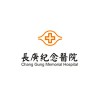
Thermography and Burning Mouth Syndrome
Burning Mouth SyndromeMedical thermography is a noninvasive technique that allows an examiner to visualize and estimate the temperature of the body . This technique allows for an evaluation of the functionality of the structures, which is why it is considered a physiological test and records the variation in the surface temperature of the human body based on the infrared radiation emitted by the surface of that body .Subjects with burning mouth syndrome (BMS) have altered sensitivity and pain thresholds for thermal stimuli compared to a control group An objective of this study is to standardize temperature values derived from thermograms of the tongue in BMS .

Point of Care Testing of Cholinesterase Activity During Burn- and Polytrauma
TraumaBurnsGoal of this study is to measure serum cholinesterase activity in patients with traumatic and/or burns injury admitted to the emergency room by using point-of- care-test system (POCT). Serum cholinesterase activity, measured using POCT system, might play an important role in the early diagnosis and prediction of patient outcome in trauma-induced systemic inflammation.

Evaluation of Efficacy and Safety of Ialuset Cream and Gauze in Second-degree Burns on Child
Second-degree Burn of ChildrenObservational retrospective monocentric study occured in the univeristy hospital center of Bensançon the department of pediatric surgery. Data of patients treated in the hospital between January 2016 and January 2019 have been collected.

Diagnostic of Infections Following Major Abdominal Surgery and Burn Injury
Third Degree BurnSecond Degree BurnThis study was designed to investigate, if new biomarkers may improve the early diagnostic of infections following major abdominal surgery and severe burn injuries.

Balanced Volume Replacement Therapy With Ringer's Acetate Solution in Burn Injury
Severe Burn InjuryThis observational study compares the influence of Ringer's Lactate solution and Ringer's Acetate solution on organ function scores following severe burn injury.

Early Goal-Directed Therapy Utilizing Transpulmonary Thermodilution and Severe Burn Injury
BurnsThis study aimed to optimize fluid resuscitation with transpulmonary thermodilution (TPTD)-guided protocol and to lower the mortality rate of the severely burned.

Trace Element Repletion Following Severe Burn Injury
Critical IllnessNutritional Deficiency2 moreMajor burn patients are characterized by large exudative losses of Cu, Se and Zn. Trace element (TE) repletion has been shown to improve clinical outcome. The study aimed to check if our repletion protocols were achieving normalization of TE plasma concentrations of major burn patients and if the necessity for continuous renal replacement therapy (CRRT) might increase the needs.

The Relationship of Body Function, Participation and Quality of Life in Patients With Burn: A Longitudinal...
BurnThe relationship of body function, participation and quality of life in patients with burn: A longitudinal study

Feedback System of PROMS in Children With Burns
BurnsThe primary objective of the overall study is to determine the feasibility and usefulness of a feedback system that delivers BOQ results to physicians in "real time" during outpatient encounters using iPads.

Feasibility of Obtaining ADRCs From Discarded Thermal Burn Eschar Tissue Using Investigational Celution®...
Thermal BurnThe objective of the study is to assess the logistical and biological feasibility of preparing ADRCs from adipose tissue excised during standard-of-care burn wound excision using the Celution® System for autologous, same-day application to the burn wound.
